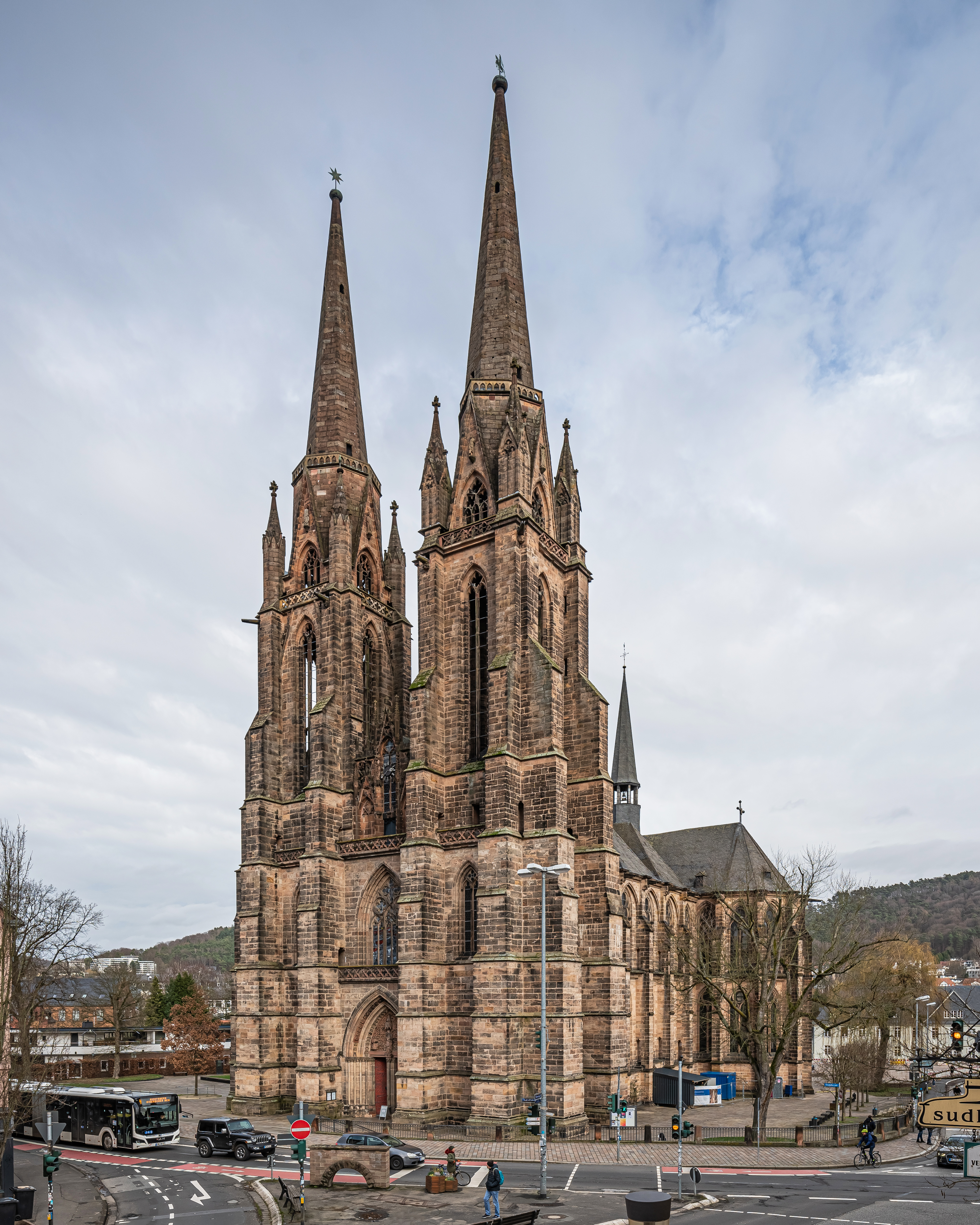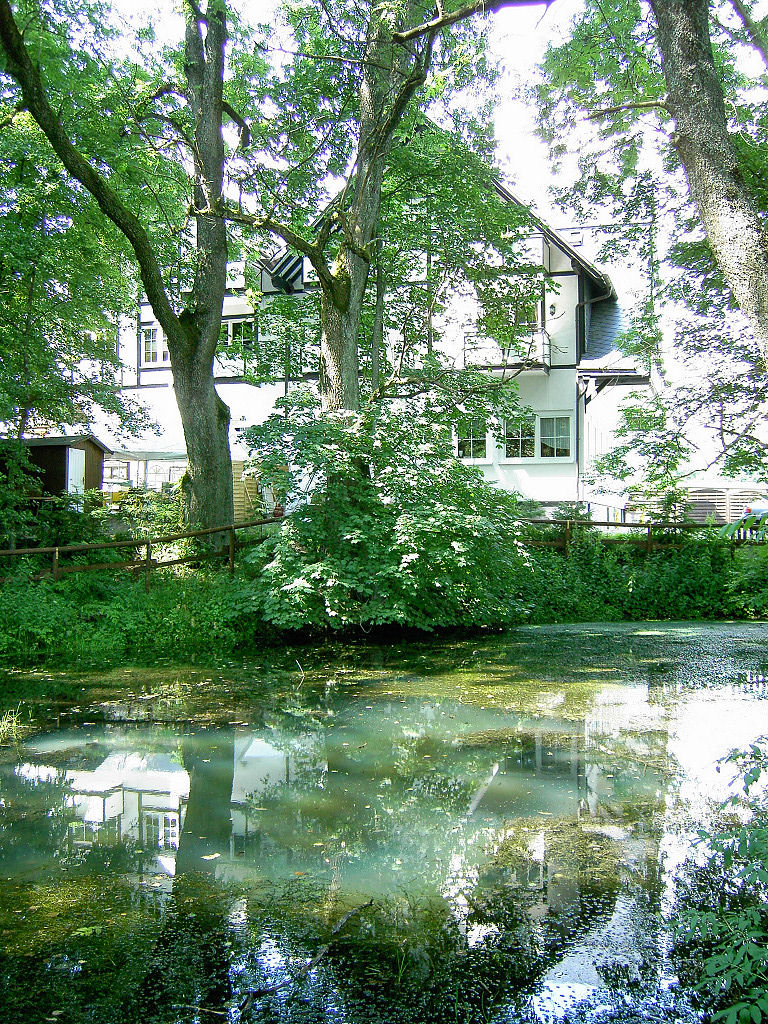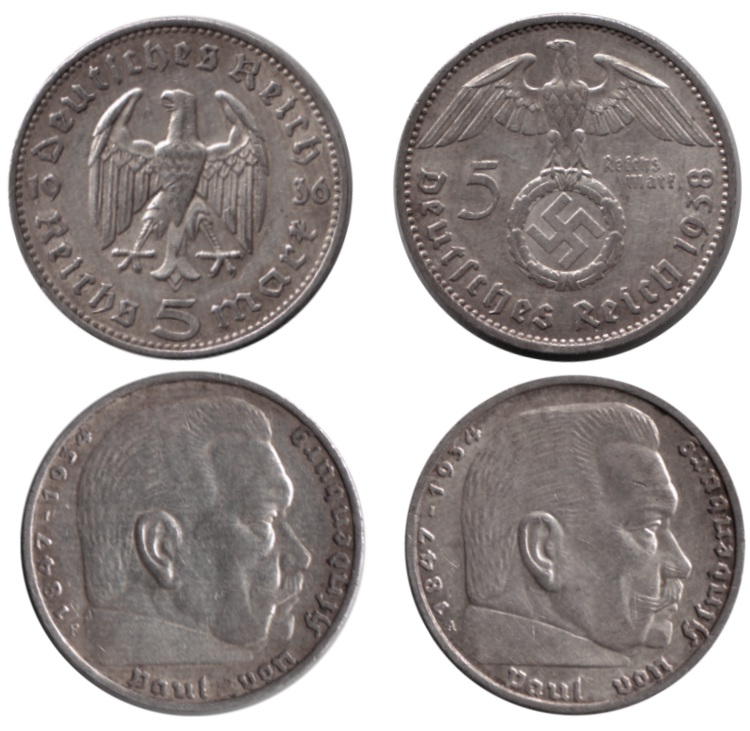|
Bombing Of Marburg
The bombing of Marburg was a series of American aerial bombing attacks on the city of Marburg, Germany, during World War II. A total of thirteen air raids were carried out by the United States Army Air Forces in 1940 and between 1944 and 1945 as part of the Allied campaign of strategic bombing of Germany. However, unlike nearby Giessen, Siegen and Frankfurt, the city itself escaped major damage. Background While Marburg was not designated as a city to be spared because of a particular reason by the Allies, it was also not seen as a target of opportunity. Marburg lacked any important industrial sites and from 1942 to 1945, the entire city turned into a hospital and was designated as a hospital city, with schools and government buildings turning into wards to augment the existing hospitals. By the spring of 1945, there were over 20,000 patients – mostly wounded German soldiers. As early as 1938, the sirens were howling several times in Marburg to practice air raid alarms in case ... [...More Info...] [...Related Items...] OR: [Wikipedia] [Google] [Baidu] |
Marburg
Marburg (; ) is a college town, university town in the States of Germany, German federal state () of Hesse, capital of the Marburg-Biedenkopf Districts of Germany, district (). The town area spreads along the valley of the river Lahn and has a population of approximately 76,000. Having been awarded town privileges in 1222, Marburg served as capital of the Landgrave, landgraviate of Hessen-Marburg during periods of the 15th to 17th centuries. The University of Marburg was founded in 1527 and dominates the public life in the town to this day. Marburg is a historic centre of the pharmaceutical industry in Germany, and there is a plant in the town (by BioNTech) to produce vaccines to tackle Covid-19. History Founding and early history Like many settlements, Marburg developed at the crossroads of two important early medieval highways: the trade route linking Cologne and Prague and the trade route from the North Sea to the Alps and on to Italy, the former crossing the river La ... [...More Info...] [...Related Items...] OR: [Wikipedia] [Google] [Baidu] |
Marburg (Lahn) Station
Marburg (Lahn) station is a through station at the 104.3 km mark of the Main-Weser Railway in the north-east of the city of Marburg in the German state of Hesse and is used daily by about 12,000 people. The station is classified by Deutsche Bahn (DB) as a category 3 station. History The station was completed with the construction of the Main-Weser Railway in 1850 and was built outside the built up area of the city on the other side of the Lahn. Since 1903, the Marburg tramway has ended at the station. Initially it was a horse-drawn tram, which was converted to electric operation in 1911. After the Second World War, it was decided against continued operation and the tram ceased operations in 1951. A short time later, the Marburg trolleybus, which replaced the tram, opened. This was finally discontinued in 1968. In 1945, the station was severely damaged several times by air raids and dropped bombs, and in some cases it was completely destroyed. The main goals for the railwa ... [...More Info...] [...Related Items...] OR: [Wikipedia] [Google] [Baidu] |
World War II Strategic Bombing Of Germany
The world is the totality of entities, the whole of reality, or everything that exists. The nature of the world has been conceptualized differently in different fields. Some conceptions see the world as unique, while others talk of a "plurality of worlds". Some treat the world as one simple object, while others analyze the world as a complex made up of parts. In scientific cosmology, the world or universe is commonly defined as "the totality of all space and time; all that is, has been, and will be". Theories of modality talk of possible worlds as complete and consistent ways how things could have been. Phenomenology, starting from the horizon of co-given objects present in the periphery of every experience, defines the world as the biggest horizon, or the "horizon of all horizons". In philosophy of mind, the world is contrasted with the mind as that which is represented by the mind. Theology conceptualizes the world in relation to God, for example, as God's creation, ... [...More Info...] [...Related Items...] OR: [Wikipedia] [Google] [Baidu] |
Lahn
The Lahn () is a , right (or eastern) tributary of the Rhine in Germany. Its course passes through the States of Germany, federal states of North Rhine-Westphalia (23.0 km), Hesse (165.6 km), and Rhineland-Palatinate (57.0 km). It has its source in the Rothaar Mountains, Rothaargebirge, the highest part of the Sauerland, in North Rhine-Westphalia. The Lahn meets the Rhine at Lahnstein, near Koblenz. Important cities along the Lahn include Marburg, Gießen, Wetzlar, Limburg an der Lahn, Weilburg and Bad Ems. Tributaries to the Lahn include the Ohm (river), Ohm, Dill (river), Dill, the Weil (river), Weil and the Aar (Lahn), Aar. The lower Lahn has many dams with Lock (water transport), locks, allowing regular shipping from its mouth (river), mouth up to Runkel. Riverboats also operate on a small section north of the dam in Gießen. Source area The Lahn is a -long, right (or eastern) tributary of the Rhine in Germany. Its course passes through the States of German ... [...More Info...] [...Related Items...] OR: [Wikipedia] [Google] [Baidu] |
First Army (United States)
First Army is the largest OC/T organization in the U.S. Army, comprising two divisions, ten brigades, and more than 7,500 Soldiers. Its mission is to partner with the U.S. Army National Guard and U.S. Army Reserve to enable leaders and deliver trained and ready units for Combatant Commands. On order, First Army executes large-scale mobilization and unit eonstitution to build America’s Army for combat. First Army achieves this through four lines of effort: Develop the Profession; Deliver Combat Ready Forces; Enable Reserve Component Warfighters; and Transformation for the Total Army of 2040. History Establishment and World War I The First Army was established on 10 August 1918 as a field army when sufficient American military manpower had arrived on the Western Front during the final months of World War I. The large number of troops assigned to the American Expeditionary Forces (AEF) required the activation of subordinate commands. To fill this need, First Army was ... [...More Info...] [...Related Items...] OR: [Wikipedia] [Google] [Baidu] |
Maurice Rose
Maurice Rose (November 26, 1899 – March 30, 1945) was a career officer in the United States Army who attained the rank of major general. A veteran of World War I and World War II, Rose was commanding the 3rd Armored Division when he was killed in action in Germany during the closing days of the Second World War becoming the highest-ranking American killed by enemy fire during the war in Europe. Rose was the son and grandson of rabbis from Poland, at the time of his death he was the highest-ranking Jewish person in the U.S. Army. He was not especially religious, did not publicize his faith, and claimed in his Army records to be Protestant. Rose was married twice and had two sons. The 3rd Armored Division's official history of World War II memorialized Rose by stating "He was over six feet tall, erect, dark haired, and had finely chiseled features. He was firm and prompt of decision, brooking no interference by man, events or conditions in order to destroy the enemy." Early ... [...More Info...] [...Related Items...] OR: [Wikipedia] [Google] [Baidu] |
100th Air Refueling Wing
The 100th Air Refueling Wing (100th ARW), nicknamed ''the Bloody Hundredth'', is a United States Air Force unit assigned to the Third Air Force, United States Air Forces in Europe – Air Forces Africa. It is stationed at RAF Mildenhall, Suffolk, United Kingdom. It is also the host wing at RAF Mildenhall. The 100th ARW is the only permanent U.S. air refueling wing in the European theater, operating the Boeing KC-135R/T Stratotanker. During World War II, its predecessor unit, the 100th Bombardment Group (Heavy), was an Eighth Air Force B-17 Flying Fortress unit in England, stationed at RAF Thorpe Abbotts. Flying over 300 combat missions, the group earned two Distinguished Unit Citations (Regensburg, 17 August 1943; Berlin, 4/6/8 March 1944). The group suffered tremendous losses in combat, with 177 aircraft missing in action (MIA), flying its last mission on 20 April 1945. One of the wing's honors is that it is the only modern USAF operational wing allowed to display on its ... [...More Info...] [...Related Items...] OR: [Wikipedia] [Google] [Baidu] |
Ninth Air Force
The Ninth Air Force (Air Forces Central) is a Numbered Air Force of the United States Air Force headquartered at Shaw Air Force Base, South Carolina. It is the Air Force Service Component of United States Central Command (USCENTCOM), a joint Department of Defense combatant command responsible for U.S. security interests in 27 nations that stretch from the Horn of Africa through the Persian Gulf region, into Central Asia. Activated as 9th Air Force on 8 April 1942, the command fought in World War II both in the Western Desert Campaign in Egypt and Libya and as the tactical fighter component of the United States Strategic Air Forces in Europe, engaging enemy forces in France, the Low Countries and in Nazi Germany. During the Cold War, it was one of two Numbered Air Forces of Tactical Air Command. Co-designated as United States Central Command Air Forces (CENTAF) on 1 January 1983, on 2009 as part of a complicated transfer of lineage, the lineage and history of the Ninth Air Fo ... [...More Info...] [...Related Items...] OR: [Wikipedia] [Google] [Baidu] |
Reichsmark
The (; sign: ℛ︁ℳ︁; abbreviation: RM) was the currency of Germany from 1924 until the fall of Nazi Germany in 1945, and in the American, British and French occupied zones of Germany, until 20 June 1948. The Reichsmark was then replaced by the Deutsche Mark, to become the currency of West Germany and then all of Germany after the 1990 reunification. The Reichsmark was used in the Soviet occupation zone of Germany until 23 June 1948, where it was replaced by the East German mark. The Reichsmark was subdivided into 100 (Rpf or ℛ︁₰). The Mark is an ancient Germanic weight measure, traditionally a half pound, later used for several coins; (''realm'' in English) comes from the official name for the German state from 1871 to 1945, . History The Reichsmark was introduced in 1924 as a permanent replacement for the '' Papiermark''. This was necessary due to the 1920s German inflation which had reached its peak in 1923. The exchange rate between the old ''Papiermark'' ... [...More Info...] [...Related Items...] OR: [Wikipedia] [Google] [Baidu] |
Kassel
Kassel (; in Germany, spelled Cassel until 1926) is a city on the Fulda River in North Hesse, northern Hesse, in Central Germany (geography), central Germany. It is the administrative seat of the Regierungsbezirk Kassel (region), Kassel and the district Kassel (district), of the same name, and had 201,048 inhabitants in December 2020. The former capital of the States of Germany, state of Hesse-Kassel, it has many palaces and parks, including the Bergpark Wilhelmshöhe, which is a UNESCO World Heritage Site. Kassel is also known for the ''documenta'' Art exhibition, exhibitions of contemporary art. Kassel has a Public university, public University of Kassel, university with 25,000 students (2018) and a multicultural population (39% of the citizens in 2017 had a migration background). History Kassel was first mentioned in 913 AD, as the place where two deeds were signed by King Conrad of Franconia, Conrad I. The place was called ''Chasella'' or ''Chassalla'' and was a fortifi ... [...More Info...] [...Related Items...] OR: [Wikipedia] [Google] [Baidu] |
Strategic Bombing During World War II
World War II (1939–1945) involved sustained strategic bombing of railways, harbours, cities, workers' and civilian housing, and industrial districts in enemy territory. Strategic bombing as a military strategy is distinct both from close air support of ground forces and from Air supremacy#World War II, tactical air power. During World War II, many military strategists of air power believed that air forces could win major victories by attacking industrial and political infrastructure, rather than purely military targets. Strategic bombing often involved bombing areas inhabited by Non-combatant, civilians, and some campaigns were deliberately designed to target civilian populations in order to terrorism, terrorize them or to weaken their morale. International law at the outset of World War II did not specifically forbid the aerial bombardment of cities – despite the prior occurrence of such bombing during World War I (1914–1918), the Spanish Civil War (1936–1939), and t ... [...More Info...] [...Related Items...] OR: [Wikipedia] [Google] [Baidu] |
Walter Voß
Walter Voß (26 April 1885 in Neuschloß, Lampertheim – 5 June 1972 in Marburg) was a German jurist and politician. He was the List of mayors of Marburg, mayor of Marburg from 1928–1945, from 16 January 1942 until 6 April 1945 he was temporary the Lord mayor of Marburg. He was buried in Braunschweig. References 1885 births 1972 deaths Mayors of Marburg Jurists from Hesse {{Germany-mayor-stub Förderndes Mitglied der SS Lawyers in the Nazi Party ... [...More Info...] [...Related Items...] OR: [Wikipedia] [Google] [Baidu] |










